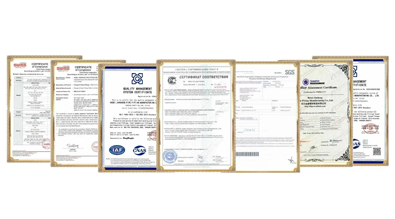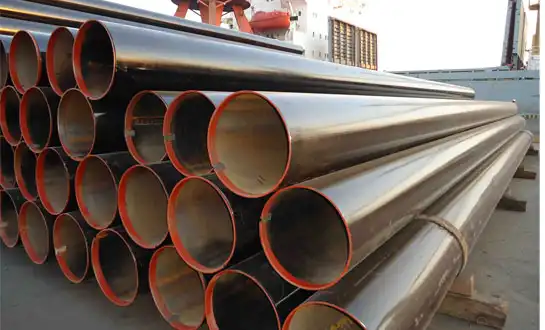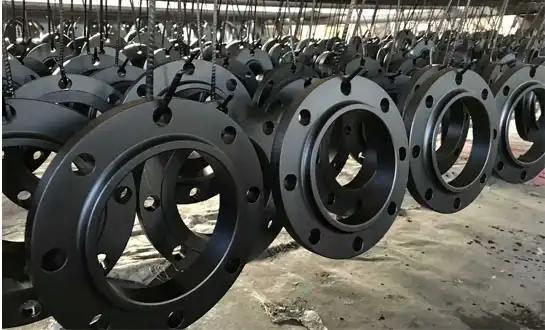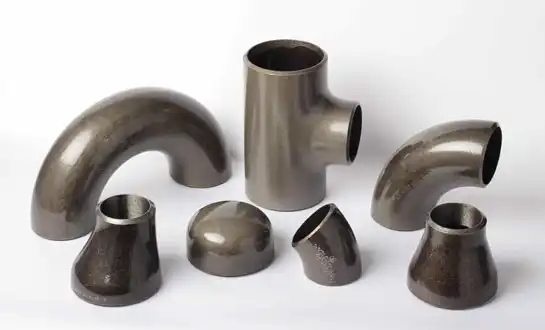What Makes Class 600 RTJ Flanges Different from Other Pressure Class Flanges?
Class 600 RTJ flanges represent a specialized category of high-pressure connection systems designed for extreme operating conditions where standard flanges cannot guarantee safe, leak-free performance. These flanges have a ring-type connection design that makes metal-to-metal sealing possible by cutting accurate grooves into the flange faces. They can handle pressures of up to 1440 psi at room temperature. Unlike conventional raised-face flanges that rely on softer gasket materials, Class 600 RTJ flanges employ hardened metal rings that seat into matching grooves, providing superior sealing integrity in applications involving temperature fluctuations, mechanical vibrations, or corrosive media.

Understanding the Technical Specifications of Class 600 RTJ Flanges
Pressure-Temperature Rating Characteristics
Class 600 RTJ flanges demonstrate remarkable performance across varying temperature ranges, maintaining structural integrity where conventional flanges experience material degradation. The pressure-temperature relationship follows ASME B16.5 standards, allowing maximum working pressures of 1440 psi at temperatures below 100°F for carbon steel materials. As temperatures increase, allowable pressure decreases proportionally, ensuring safe operation throughout the thermal spectrum. The Class 600 designation refers to the pressure class rating at standard conditions, but engineers must calculate actual working pressures based on service temperature, material composition, and corrosion allowances. Class 600 RTJ flanges excel because their metal-to-metal sealing mechanism resists thermal cycling better than elastomeric gaskets, which can harden, crack, or extrude under repeated heating and cooling cycles.
Ring-Type Joint Groove Geometry
The distinguishing feature of Class 600 RTJ flanges lies in their precisely machined grooves that accommodate metal ring gaskets in either oval or octagonal cross-sections. These grooves follow dimensional specifications outlined in ASME B16.20, with tight tolerances ensuring proper ring compression and sealing contact. The groove depth, width, and radius dimensions are mathematically calculated to achieve optimal gasket compression ratios, typically between 30% and 50% of the original ring height. Class 600 RTJ flanges typically employ groove styles designated as R-number dimensions, with R-23 through R-80 representing common sizes corresponding to flange bore diameters. You need certain tools and quality control steps to make these holes. For example, you can check the surface's hardness to make sure the touch areas are clean and free of flaws that could make the sealing less effective.
Material Selection Requirements
Material specifications for Class 600 RTJ flanges extend beyond standard carbon steel grades to include alloy steels, stainless steels, and specialized materials engineered for corrosive or high-temperature environments. Common specifications include ASTM A105 for carbon steel forgings, ASTM A182 grades F11 and F22 for chrome-molybdenum alloys, and ASTM A182 grades F304 and F316 for stainless steel applications. To make sure they meet the specifications, the metallurgical qualities are put through a lot of tests, such as checking tensile strength, evaluating impact toughness, and measuring hardness. Traceability documentation accompanies each Class 600 RTJ flange, providing mill test reports that certify chemical composition and mechanical properties.
Comparing Class 600 RTJ Flanges to Other Pressure Class Systems
Performance Differences from Lower Pressure Classes
The progression from Class 150 to Class 600 RTJ flanges involves substantial increases in dimensional features and sealing capabilities that reflect the nearly tenfold pressure differential between these ratings. Class 150 flanges utilize thinner flange bodies, smaller bolt diameters, and fewer bolting positions compared to Class 600 counterparts. Flange thickness increases from approximately one inch for Class 150 to three inches or more for Class 600 RTJ flanges in comparable sizes. While Class 150 flanges commonly employ raised-face sealing surfaces with spiral-wound gaskets, Class 600 RTJ flanges mandate grooved faces with metal ring gaskets, reflecting enhanced sealing requirements for high-pressure service.
Advantages Over Conventional Gasket Systems
Class 600 RTJ flanges provide distinct advantages over conventional gasket systems in applications characterized by extreme pressures, thermal cycling, or aggressive chemical environments. Conventional spiral-wound gaskets rely on resilient materials that compress under bolt load, but these materials exhibit finite temperature limits and susceptibility to creep relaxation over time. The metal ring gaskets used with Class 600 RTJ flanges resist chemical attack, maintain dimensional stability across temperature extremes from cryogenic to 1500°F, and provide consistent sealing force throughout service life. The metal-to-metal contact eliminates concerns about gasket blowout, a failure mode where internal pressure exceeds gasket strength. Fire safety is another important benefit since RTJ connections keep pressure limits in place during fire exposure situations that would quickly break down organic gasket materials.
Installation and Maintenance Considerations for Class 600 RTJ Flanges
Proper Assembly Techniques
Successful installation of Class 600 RTJ flanges requires adherence to precise assembly procedures that ensure uniform gasket compression and proper bolt loading. The first step is to prepare the surface well, which includes washing the grooves to get rid of dirt and rust. Ring gasket selection considers material compatibility with process media and temperature requirements. Class 600 RTJ flanges employ specific bolt tightening sequences that progress circumferentially in a star pattern, applying torque incrementally through multiple passes to achieve uniform compression without inducing flange distortion. Recommended torque values vary based on stud diameter and material grade, with typical values ranging from 500 to 1500 foot-pounds for larger diameter connections.
Inspection Protocols
Quality assurance for Class 600 RTJ flanges encompasses multiple inspection stages from manufacturing through installation. Initial manufacturing inspections include dimensional verification, confirming that groove profiles match design specifications. After installation, pressure testing validates joint integrity before introducing process media, with hydrostatic tests conducted at 1.5 times design pressure for Class 600 RTJ flanges. In-service inspection programs monitor flanges through visual examinations during planned outages, looking for signs of corrosion, mechanical damage, or gasket leakage.
Common Troubleshooting Solutions
Leakage represents the most common issue with Class 600 RTJ flanges, typically resulting from insufficient bolt torque, damaged groove surfaces, or incorrect ring selection. The first step in fixing the problem is to carefully look over the installation steps and make sure that the pressure numbers were correct. Groove damage from excessive ring compression or corrosion attack requires machining operations to restore proper dimensions. Class 600 RTJ flanges occasionally experience bolt failures due to hydrogen embrittlement or stress corrosion cracking, requiring metallurgical analysis to identify failure mechanisms and implement corrective actions.
Conclusion
Class 600 RTJ flanges distinguish themselves through precision-engineered groove geometry and metal-to-metal sealing mechanisms that deliver reliable performance in high-pressure applications where conventional flanges cannot ensure safe operation. HEBEI RAYOUNG PIPELINE TECHNOLOGY CO., LTD. manufactures Class 600 RTJ flanges meeting international standards with certified quality systems for demanding global applications.
FAQ
1. What pressure rating do Class 600 RTJ flanges support?
Class 600 RTJ flanges accommodate pressures up to 1440 psi at ambient temperatures for carbon steel materials, with allowable pressures decreasing as operating temperatures increase according to ASME B16.5 ratings.
2. Can Class 600 RTJ flanges use standard gaskets?
Class 600 RTJ flanges require metal ring gaskets in oval or octagonal profiles that seat into machined grooves. Standard raised-face gaskets are incompatible with RTJ groove geometry.
3. How do I identify correct ring size?
Ring gasket sizing follows ASME B16.20 designation systems using R-numbers that correspond to flange bore diameters. The flange face contains stamped markings indicating ring size.
4. What maintenance intervals apply?
Maintenance schedules vary on how bad the service is, but they usually include visual inspections during scheduled outages. Ring gaskets generally require replacement at each disassembly.
HEBEI RAYOUNG PIPELINE: Your Trusted Class 600 RTJ Flanges Manufacturers
At HEBEI RAYOUNG PIPELINE TECHNOLOGY CO., LTD., we produce Class 600 RTJ flanges with precision machining, certified materials, and rigorous inspection protocols meeting international standards including ASME B16.5, ISO 9001:2015, GOST-R, and SGS export compliance. We can make carbon steel, alloy steel, and stainless steel parts in any size and shape. Whether your project involves petrochemical processing, power generation, or offshore platforms, our Class 600 RTJ flanges deliver the sealing integrity your operations require.Contact us today at info@hb-steel.com to discuss your requirements.
References
1. American Society of Mechanical Engineers. (2021). Pipe Flanges and Flanged Fittings: NPS 1/2 through NPS 24 Metric/Inch Standard. ASME B16.5-2020, New York.
2. American Society of Mechanical Engineers. (2020). Metallic Gaskets for Pipe Flanges: Ring-Joint, Spiral-Wound, and Jacketed. ASME B16.20-2017, New York.
3. Bickford, J. H. (2018). Gaskets and Gasketed Joints, Second Edition. CRC Press, Boca Raton.
4. Brown, W. F. (2019). High-Pressure Piping Systems: Design, Installation, and Maintenance. McGraw-Hill Education, New York.
5. Singh, A. K. & Solanki, V. S. (2022). Pressure Vessel Design Manual, Fifth Edition. Butterworth-Heinemann, Oxford.
6. Waters, E. O., Rossheim, D. B., Wesstrom, D. B., & Williams, F. S. G. (2017). Formulas for Stress and Strain in Flanged Joints. Welding Research Council Bulletin 502, New York.

Need a quote? Want to see samples? Just say hello. We’re friendly. We’re fast. And we’re ready when you are.

Welcome to RAYOUNG – Strong Pipes, Stronger Promise




